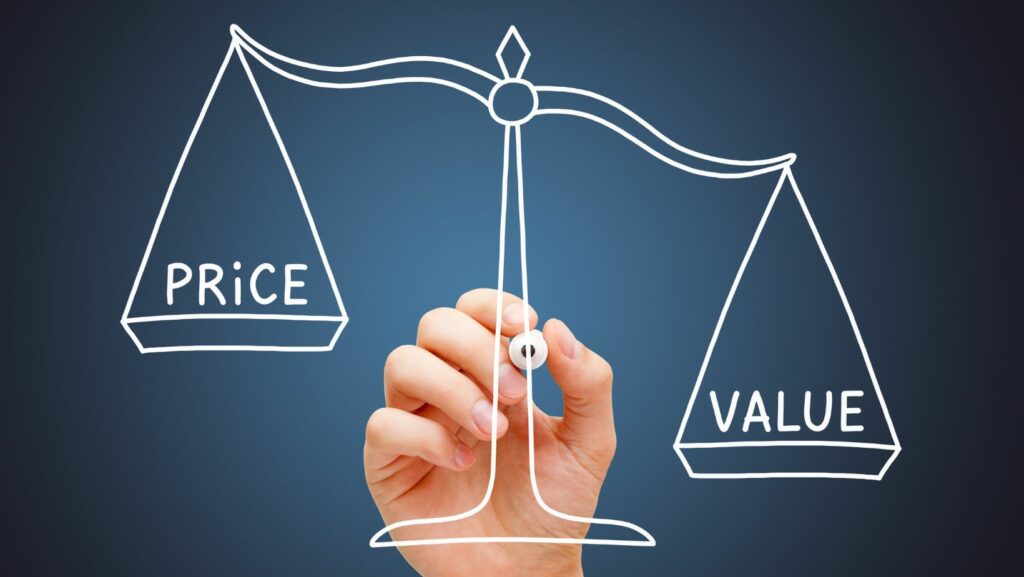In the bustling marketplace of today’s world, setting the right price for a product or service is often a game-changer. One such pricing technique that’s garnered significant attention is the premium pricing strategy. It’s a fascinating approach where businesses set prices higher than their competitors to portray their offering as superior.
This strategy isn’t just about slapping a hefty price tag on a product. It’s an intricate dance of branding, marketing, and customer psychology. It’s about convincing consumers that the product’s value justifies the high price.
Premium Pricing Strategy
As a continuation from the preceding discussion on pricing strategies, it’s essential to delve deeper into the concept of premium pricing.
What Is Premium Pricing?
 Premium pricing stands as a strategy where businesses set costs significantly higher than their competition. It’s mainly used when a product, or the brand itself, boasts superior characteristics. This approach appeals to consumers who believe that expensive items enjoy higher quality. Zahay and Griffin (2020), renowned marketing scholars, cite that premium pricing extends beyond mere money exchange – it’s a signifier of product quality and social status.
Premium pricing stands as a strategy where businesses set costs significantly higher than their competition. It’s mainly used when a product, or the brand itself, boasts superior characteristics. This approach appeals to consumers who believe that expensive items enjoy higher quality. Zahay and Griffin (2020), renowned marketing scholars, cite that premium pricing extends beyond mere money exchange – it’s a signifier of product quality and social status.
Premium pricing strategy possesses distinct traits. Firstly, products or services under premium pricing usually exhibit unique or superior features. An iPhone, for example, warrants its high price due to unparalleled technology. Secondly, these products typically cater to a niche market segment, such as luxury watches targeting high-income consumers. Lastly, this strategy also solidly depends on exceptional branding and marketing strategies. Only when consumers perceive the product as premium, paying an above-average price becomes conceivable. In this context, Apple’s product design and premium feel affirm its position as a premier brand, supporting its premium pricing strategy.
Advantages of Premium Pricing Strategy
Employing a premium pricing strategy does not just allow a product to stand out; it also hosts several advantages that can significantly elevate a brand. This strategy has been instrumental in redefining the image of many firms, and its benefits are beyond just premium pricing.
Enhanced Brand Perception
 Premium pricing strategy
Premium pricing strategy
Although premium prices may deter some consumers, they create an opportunity for boosted profit margins—a benefit that may compensate for lower sales volumes. A premium pricing strategy means selling fewer units but making more profit per sale, which often leads to greater total profits than selling a high volume at lower prices. Consider the case of Beats headphones, they sell at excessive prices, and yet, due to exceptionally high profit margins, they thrive in the industry. To summarise, while it’s true that premium pricing may limit market scope in terms of quantity, it accelerates overall business profitability by ensuring a higher income per product sold. You may also check Vector Vest for better understanding towards stocks.
Challenges of Implementing Premium Pricing
 Despite the allure of a premium pricing strategy manifesting through enviable brands like Apple, Chanel, and Beats, it’s not without its hurdles. One of the most notable challenges is convincing consumers of the product’s worth, especially when similar options exist at lower prices. A business executing a premium pricing strategy expects buyers to recognize and value the superiority, exclusivity, or exceptional quality that justifies the high price. However, if the product doesn’t deliver on its promise or if competitors offer comparable products at reduced prices, customer loyalty can quickly diminish.
Despite the allure of a premium pricing strategy manifesting through enviable brands like Apple, Chanel, and Beats, it’s not without its hurdles. One of the most notable challenges is convincing consumers of the product’s worth, especially when similar options exist at lower prices. A business executing a premium pricing strategy expects buyers to recognize and value the superiority, exclusivity, or exceptional quality that justifies the high price. However, if the product doesn’t deliver on its promise or if competitors offer comparable products at reduced prices, customer loyalty can quickly diminish.
Another challenge is maintaining the high-value perception in the market. Given that premium pricing leans on portraying a product or service as ‘high-end’ or ‘exclusive’, anything that might taint this perception can negatively impact sales. For instance, discounts or sales promotions could inadvertently devalue a product in the customer’s eyes, contradicting the premium branding.

